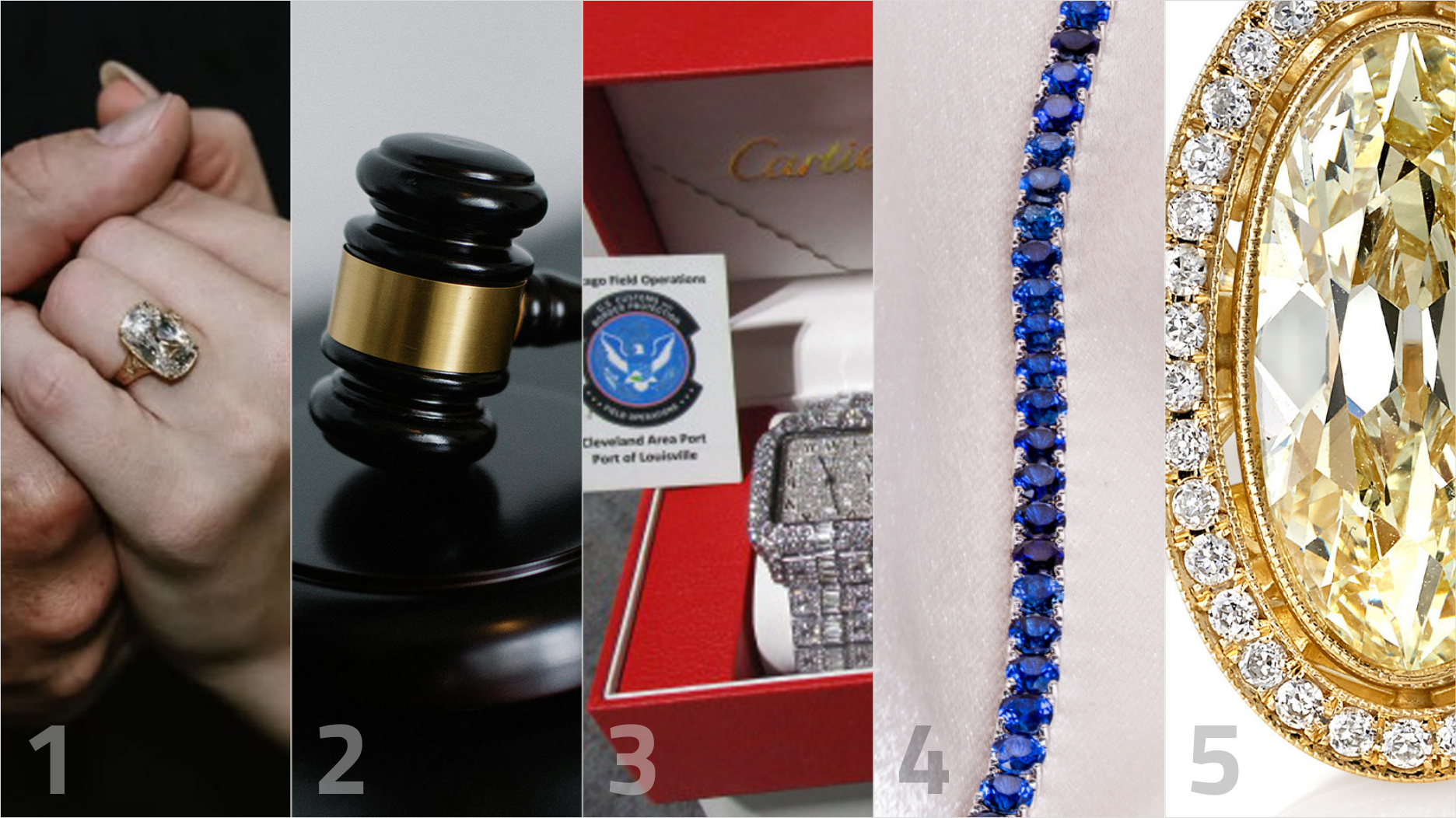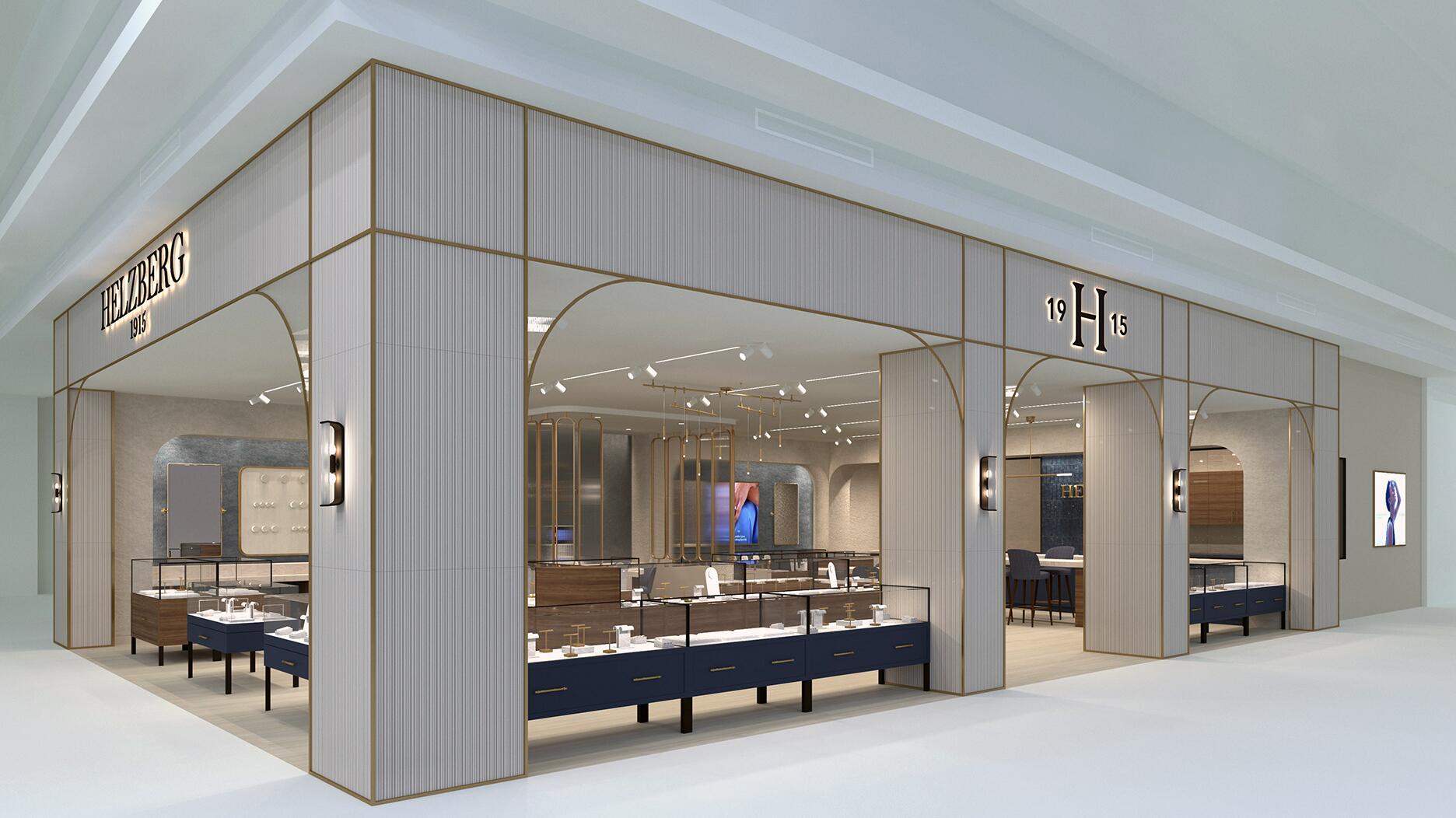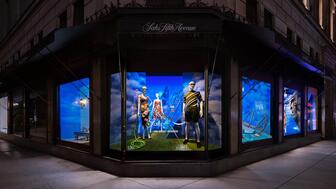Executive Chairman Richard Baker will take over the role as rumors swirl that a bankruptcy filing is imminent for the troubled retailer.
6 Predictions for 2018
Editor-in-Chief Michelle Graff says innovation will rule while tired practices and retailers will fall by the wayside.

Hello, and Happy New Year.
I like to start off each new 365-day trip around the sun with thoughts on what will be “hot” in retail in the year ahead (this year: innovative spaces will thrive while the same-old, same-old will struggle) and predictions about which businesses will not make it (Sears and lower-end malls).
So here are six predictions for 2018, starting with a little bad news for people who like bad news.
1. The number of jewelry store closings will continue to decline.
Is it because jewelry retail results are earth-shattering? No, it’s more due to the fact that the spike in closings was largely demographic.
Many baby boomers (those born between 1946 and 1964, so about 71 to 53 now), a huge generation that’s comprised the majority of jewelry store owners for years, reached retirement age and made the decision about what to do with their store.
RELATED CONTENT: Demographic Drop-Off
The stores that remain open, for the most part, are those that have survived this demographic shift, in one way or another.
They’ve been handed off and/or sold to the next generation, or have opted to make the changes necessary to compete today: a presence on social media, and a website and in-store experience that align and are up-to- date.
Now, please note, I did not write that the decline would reverse or that the industry would grow; I acknowledge that it remains significantly smaller. I only stated that the slowing of retail closures that we’ve seen over the past three quarters would continue.
2. But online retailers will keep opening stores as will designers and brands.
In 2017, online consignment site The RealReal opened its first brick-and-mortar store, in New York City’s SoHo neighborhood; jewelry designer Jennifer Meyer announced that she was opening her first store, which will be located in her native California; and Vrai & Oro, the jewelry label owned by lab-grown diamond company Diamond Foundry, welcomed its first physical location, just to name a few.
Blue Nile added a sixth “webroom,” in a mall in Salem, New Hampshire.
Outside of jewelry, online giant Amazon now has 13 book stores in seven states with additional ones set to open in Bethesda, Maryland; Austin, Texas; and Washington, D.C., and it also paid $13.4 billion to buy grocery store chain Whole Foods in 2017.
It’s worth noting that the chain Amazon opted to buy, Whole Foods, aka “Whole Paycheck,”
3. It’s going to be a really sad year for malls, particularly lower-end malls.
I was just home for the holidays and opted to go with the parents to walk around the Beaver Valley Mall one afternoon because I was going stir crazy inside and it was too cold to exercise outside.
I could sum up the experience in one word: sad.
I used to hang out at the mall all the time as a teenager in the mid-‘90s and bought everything there: clothes at The Limited (gone, from everywhere), stuffed animals at the Disney Store (no longer there), posters and CDs at Sam Goody and books at Waldenbooks (both long gone).
Today, very few stores remain, and you can see where the mall has tried to survive by filling in with non-retail tenants. There’s now a Planet Fitness gym; a center where senior citizens can come to exercise and socialize; and a technical school, the DCI Career Institute.
The future of the mall is uncertain.
My mom told me as we were pulling into the fairly empty parking lot that the mall has been sold, and she was right. The Pennsylvania Real Estate Investment Trust (PREIT) offloaded the property in January 2017 for $24.2 million to an undisclosed buyer. It was considered a “non-core” and “lower productivity” mall and was sold alongside the Crossroads Mall in Beckley, West Virginia.
My mom said she hasn’t heard what they plan to do with the site, and I was able to find little information on its future from local news outlets.
Meanwhile, toward the end of the year, there was a major consolidation in the mall space at the higher end.
Paris-based Unibail-Rodamco SE announced in December that it has agreed to buy Westfield Corp. for about $15.8 billion, bringing together two of the largest mall operators in the world.
Though the companies’ portfolios are comprised of shopping centers decidedly more upscale than the Beaver Valley Mall, they too are tasked with the challenge of filling empty, and costly, space in an age when fewer physical stores are needed, and decided it would be easier to do so together.
4. But “fun” retail will thrive.
Tiffany & Co. was among the retailers that tried out a pop-up shop in 2017, as was online jewelry brand AuRate, and Amazon (of course) had some pop-ups inside Whole Foods stores.
A group of eight independent designers--Wendy Brandes, Julie Lamb, Delphine Leymarie, Page Sargisson, My Story Fine Jewelry, Christine Huber, Goldhenn and Maya J--popped up together in March at an event they called “The Hook Up.”
Pop-up shops are a way to build brand awareness, meet existing customers face-to-face and, hopefully, engage new customers. They come without the long-term overhead of leasing or buying a permanent space and can also be a good way to test the waters to see if your business needs a physical space, or if a specific area is going to work.
Outside of pop-up shops, Tiffany & Co. added an element of fun to the redesigned fourth floor of its flagship store in New York City, a café where people can have breakfast, lunch and dinner at Tiffany’s.
And designer Marla Aaron debuted what I think is one of the most innovative and interesting ways of selling jewelry in a long time, a vending machine in the Brooklyn Museum.
The National Jeweler editors plan to take a trip over to the museum to meet with Marla and see her machine in action just as soon as we have a weather forecast that doesn’t look like this.
5. AI will become more prevalent.
Artificial intelligence, or AI, has been the topic of dozens of movies over the decades, from Stanley Kubrick’s “2001: A Space Odyssey” (1968) to the droids in “Star Wars” to 2013’s “Her,” which features Joaquin Phoenix’s character falling in love with an operating system voiced by Scarlett Johannsen.
While it might seem like a far-off concept, the majority of us interact with artificial intelligence on a daily basis. Anyone who has an Amazon Alexa, Google Home or similar device is using AI, as we are anytime we pick up our smartphone and let it fill in the blank for us when sending a text or Googling for information.
I predict that we will see AI play an even bigger role in retail in 2018, as more retailers employ the ever-more-human-like (and somewhat unnerving) tool to man their websites, allowing for a more personalized experience online that’s available 24-7.
Hal would be in heaven.
6. But Sears may cease to exist.
Fun fact: My great uncle Sonny, who resided next door to my paternal grandparents in Rochester, Pennsylvania, lived in a Sears “kit home” that is still standing today.
At one time, Sears sold everything out of a catalog, much like Amazon sells everything online today. This included, from 1908 to 1940, houses that were selected from a page, shipped via boxcar with a book of instructions and assembled by the purchaser.
Today, though, Sears is struggling to maintain a foothold in the market, and I would be surprised if the chain makes it through another year. What, really, is Sears selling that consumers can’t buy elsewhere at the same, or better, price and with more convenience?
I could be wrong--I was last year--but I just don’t see how Sears is going to stay in business, unless it’s in the form of its smaller-format, singularly-focused stores, like its appliances-only store in Fort Collins, Colorado or its appliance-and-mattress-only store in Pharr, Texas.
National Jeweler columnist Peter Smith wrote in “What Will Become of Retail Jewelry Stores?” that retailers today need to figure out what they want to be when they grow up, meaning their vision for their business and how it aligns with the realities of retail today.
It seems that Sears, which once sold homes, has decided it wants to be a store that focuses on items people need most when they move into a home. The question is, was this decision made in time to save the company?
The Latest

Mohr had just retired in June after more than two decades as Couture’s retailer liaison.

Shekhar Shah of Real Gems Inc. will serve as president of the Indian Diamond & Colorstone Association in 2026.

How Jewelers of America’s 20 Under 40 are leading to ensure a brighter future for the jewelry industry.

This year’s good luck charm features the mythical horse Pegasus, and is our first Piece of the Week of the new year.


As part of the leadership transition, Sherry Smith will take on the role of vice president of coaching strategy and development.

It marks the third time the country has headed the Kimberley Process. Ghana will serve as vice chair.

Roseco’s 704-page catalog showcases new lab-grown diamonds, findings, tools & more—available in print or interactive digital editions.

The new Bulova x Stetson designs highlight two animals often associated with the American West—the bison and the Texas Longhorn.

Its residency at Yamron Jewelers will run through May 2026.

From influential executives to innovative designers, we pay tribute to the people we said goodbye to this year.

The retailer is expanding into areas with large Indian and South Asian populations.

The Italian brand has opened its first flagship amid the peaks of the Dolomites in Madonna di Campiglio, Italy.

The new curation at the Natural History Museum of Los Angeles County showcases rare gem and mineral specimens in their uncut, natural state.

The couple pleaded guilty to concealing at least $127 million in cash transactions at its precious metals businesses.

Consumers shared concerns about prices, inflation, tariffs, trade, and politics in the survey’s write-in response section.

In February 2026, the auction house will move its headquarters to the former Steinway Hall, a neoclassical landmark on Billionaires’ Row.

The new show will take place Jan. 23-25, 2026.

The former BHP Billiton leader and Gemfields chairman is remembered for his influential leadership throughout his 50-year mining career.

The LVMH-owned brand has partnered with the costume design union to revamp its award for 2026.

The luxury titan inked a deal to acquire an initial minority stake in the jewelry manufacturer with a pathway to full ownership by 2032.

The company’s curation of unsigned vintage and estate jewelry debuted at the Bloomingdale’s in Costa Mesa, California.

In the recent multi-shipment seizure, CBP also found counterfeit Audemars Piguet, Moncler, and Chrome Hearts items.

Jewelers of America execs and National Jeweler editors discuss tariffs, the sky-high gold price, and the engagement that broke the internet.

The luxury goods company said founder Ippolita Rostagno will remain at the brand’s helm.

Laura Burdese, who joined the Italian luxury brand in 2022, will take on the role in July.

The National Jeweler editors revisit the most noteworthy industry happenings and design trends from 2025.

























